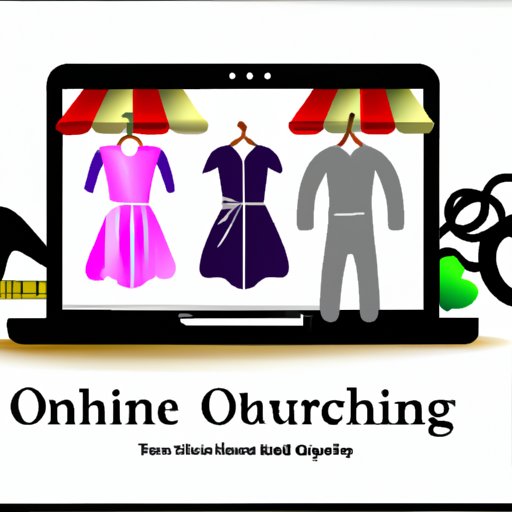Introduction
Thanks to the rise of ecommerce, starting an online clothing business is easier than ever before. Whether you’re hoping to become the next big fashion mogul or just want to make a bit of extra money on the side, this comprehensive guide will help you get your business off the ground. Read on to learn the steps you should take to start an online clothing business.

Research Your Target Market and Identify Your Niche
Before you do anything else, you need to understand who you’re selling to. Take some time to research the demographics of your potential customers—their age, gender, income level, and more. This will help you determine which type of clothes you should carry, as well as the best way to market and advertise your business.
Once you’ve identified your target demographic, you can begin to identify your niche within the market. Maybe you specialize in eco-friendly materials, or perhaps you have a unique focus on plus-size clothing. By narrowing your focus and specializing in one particular area, you can set yourself apart from the competition.

Develop a Business Plan and Set Goals
Now that you’ve identified your target market and niche, it’s time to develop a business plan. This should include an analysis of the market, a description of your product line, and a timeline for launching your business. Additionally, you should set clear goals for yourself, both short-term and long-term. This will help you stay focused and motivated as you work to bring your business to life.
“Writing down goals and objectives is essential for any small business owner,” says business coach and consultant Michaela Alexis. “Not only does it help you stay organized, but it also gives you something to refer back to when you need to stay on track.”
Choose Your Brand Name, Logo, and Website
Now that you have a business plan and goals in place, it’s time to choose a name, logo, and website for your business. When selecting a brand name, try to pick something that’s memorable, unique, and easy to pronounce. You’ll also want to make sure the domain name is available so you can create a website for your business.
Next, create a logo for your business. This should be simple and easily recognizable, so people can quickly identify your brand. Finally, set up a website for your business. This will be the face of your company, so make sure it’s professional, user-friendly, and visually appealing.
Source Quality Suppliers and Manufacturers
Once you have your branding in place, it’s time to source quality suppliers and manufacturers. Research potential suppliers and compare prices, delivery times, and other factors. You may also want to consider negotiating contracts to ensure the best possible terms.
“It’s important to take the time to find reliable suppliers,” says Mary Jones, founder of the online clothing store Trendy Threads. “This can be a difficult process, but it’s essential if you want to ensure high-quality products and timely deliveries.”
Develop a Pricing Strategy
Once you’ve sourced your suppliers and manufacturers, it’s time to develop a pricing strategy. Start by establishing a cost structure, which includes the cost of materials, labor, and overhead. Then, use this information to determine your prices. Keep in mind that you’ll need to factor in shipping costs and any taxes that may apply.
When setting your prices, make sure you’re competitive with other businesses in your niche. You don’t want to price yourself out of the market, but you also don’t want to undervalue your products.

Market and Promote Your Online Clothing Business
Now that you have your products and pricing in place, it’s time to start marketing and promoting your business. Utilize social media platforms like Instagram and Facebook to reach potential customers. You can also run advertising campaigns on these platforms to increase visibility. Additionally, consider participating in local events or trade shows to spread the word about your business.
“Marketing and promotion is key to the success of any business,” says digital marketing expert Peter Smith. “You need to be proactive in getting your name out there and engaging with potential customers.”
Track and Analyze Performance Metrics
Finally, it’s important to track and analyze performance metrics. Monitor your sales figures to see what’s working and what isn’t. Additionally, track customer engagement to see how people are responding to your products and marketing efforts. Measure the return on investment (ROI) of each campaign to determine which strategies are most effective.
By tracking and analyzing performance metrics, you can make informed decisions about where to invest your time and resources. This will help you maximize your profits and ensure the long-term success of your business.
Conclusion
Starting an online clothing business requires research, planning, and hard work. But with the right strategies and dedication, you can build a successful business that meets the needs of your target market. From researching your target market to tracking performance metrics, this guide has outlined the steps you need to take to get your business off the ground.
(Note: Is this article not meeting your expectations? Do you have knowledge or insights to share? Unlock new opportunities and expand your reach by joining our authors team. Click Registration to join us and share your expertise with our readers.)
